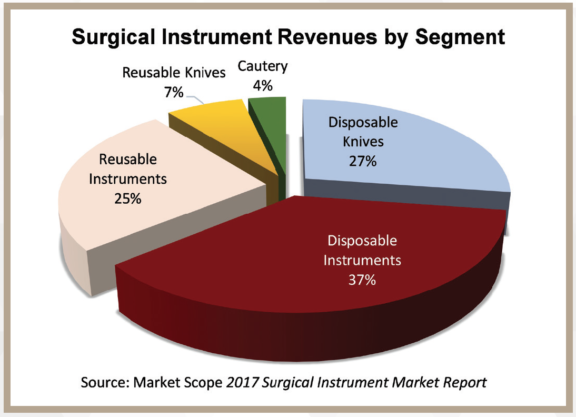Given their penchant for adapting, adopting, inventing, and investing in exciting technology, ophthalmic surgeons and other stakeholders in the specialty have long enjoyed their reputation as innovators. Ophthalmic surgeons interested in getting their hands on cutting-edge interventions are excited by the possibility of decreased governmental intervention in the regulatory process; and other ophthalmic participants in the specialty are appreciative of the way the stock market has responded to the business-friendly gestalt ushered in by the new administration. Expectations are that this positive vibe will translate into substantial investments that will help drive research and development.
Michael Lachman, the founder of EyeQ Research, a company that provides consulting, market research, and business development expertise to leading ophthalmic concerns, has his ear to the eye market. He suggests that MIGS will continue to play a leading role in 2017’s discussions of game-changing technology, and that dry eye diagnostic and treatment technology, as well all things presbyopia related, will continue to garner interest from venture capitalists and others keeping track of what is hot and what is not.
Alice Epitropolous, MD, who opened a Dry Eye Center of Excellence a few years ago at Ophthalmic Surgeons & Consultants of Ohio (OSCO), where she is a cataract and refractive surgeon, is an example of a someone equally interested in adopting the cutting edge technology coming out of the vast ophthalmic R&D pipeline as she is developing her own. Dr. Epitropolous developed the EpiGlare tester, a device that helps document the disability that cataract patients experience at night time. “Working with the Tech Columbus research team and the Ohio Health Research and Innovation Department, really helped me bring my invention to life,” she says. Dr. Epitropolous introduced the glare tester at the American Academy of Ophthalmology meeting in 2015, and licensed it to EyeCare and Cure. The device is currently available and being used internationally in the evaluation of cataract patients. Dr. Epitropolous won the “Outstanding Woman in Technology” award in 2008 from Tech Columbus for the patent that she developed on the EpiGlare tester. It took nearly a decade from conception to completion to bring it to market. “Having the idea for a new device is one thing, but getting it off the ground and into development requires a whole other skill set,” says Dr. Epitropolous.
Attractive Investment Arena
Investments in the ophthalmology arena in 2016 were substantially higher than those in 2015 in terms of total funds — $7.1 billion in 2016 compared with $935 million in 2015, largely due to Johnson & Johnson’s acquisition of AMO, a $4.3 billion transaction, according to David Harmon, president Market Scope Inc., and he says another strong year is expected in 2017. There are at least 80 ophthalmic companies and projects that are currently in fundraising development stages, and many of these are expected to seek funds in 2017, according to Mr. Harmon.
Gil Kliman, MD, managing director at InterWest Partners, says “Ophthalmology continues to be one of the most attractive investment areas in medicine, because you have a convergence of innovative technology such as lasers, antibody therapy, and gene therapy as well as innovative practitioners who adopt new technologies quickly and figure out ways to grow their practice by adopting new technologies.“
An interesting trend in the ophthalmic surgical market is an increasing preference for disposable instruments and knives as compared with re-useable versions. According to Market Scope, during the past decade this has led to these devices accounting for nearly two-thirds of global surgical instrument market revenues (Figure). Global revenues for surgical instruments are expected to exceed $1.2 billion in 2017 and increase to nearly $1.6 billion by 2022, at a compounded annual growth rate of just over 5%, fueled by increases in the number of surgeries performed worldwide and rising demand for disposable instruments, according to a Market Scope Surgical Instruments report.

FIGURE. There is a growing trend toward use of disposable instruments.
Looking Forward
When asked what excites them about the future of ophthalmology, forward-thinking ophthalmic surgeons highlighted developments in robotics, genetic engineering, and microtechnology. Richard H. Awdeh, MD, founder of Cirle, a medical technology development company, points out that ophthalmology is one of the first entry points to the convergence of humans and robotics, and he suggests that developments in robotics will continue more as time goes on. “The intersection of technology and humans is going to happen through the eye,” he predicts.
Iqbal “Ike” K. Ahmed, MD, FRCSC, who has been instrumental in advancing the trajectory of ophthalmic surgery with his development of MIGS, says he is excited that ophthalmology is such a fast-moving field with constant innovation that can be brought forward quite easily with great success. Dr. Ahmed, assistant professor and director of the glaucoma and advanced anterior surgical fellowship at the University of Toronto, asserts that the eye is where some of the earliest innovations in genetic engineering and stem cell research will be achieved, “because we have the tools to be able to actually see the changes in the nerve fibers right in front of our eyes.”
Vance Thompson, MD, head of Vance Thompson Vision, whose résumé includes an impressive number of ophthalmic firsts, recognizes game-changing technology when he sees it. Specific interventions that he suggests are poised to improve patient care include goggles that can lower IOP on demand, and the Light Adjustable Lens from RxSight (formerly Calhoun Vision).
Equinox Balance Goggles, currently in development by Equinox LLC, are the brainchild of Dr. Thompson’s partner, John Berdahl, MD. The device can reportedly control and lower atmospheric pressure around the eye, which should lower pressure inside the eye. “Our initial laboratory experiments are promising,” says Dr. Berdahl, who explains that by using these goggles to decrease the pressure within the eye, patients may avoid surgery or the side effects of medication. Dr. Berdahl says there is so much to be excited about in ophthalmology, but if forced to narrow it down he would pinpoint cerebrospinal fluid’s (CSF) possible role in glaucoma, adjustable and/or upgradable IOLs and MIGS. “I love all of the options that we have in the MIGS category; because of the developments in MIGS there are so many different ways that we can safely and effectively lower eye pressure today that were not in existence just a few years ago,” he remarks. His reflections regarding CSF’s role in glaucoma stem from his own research and more. “The concept that glaucoma may be a two-pressure disease is getting more serious consideration and more serious scientific scrutiny than ever before. There are a number of laboratories exploring this in animal models; there has been continued clinical science that is mostly supportive of the concept; and many physicians have started to believe that a low CSF pressure may play a role in the progression of glaucoma,” he explains. He says this could be a real game changer. “If this turns out to be true, it opens up an entirely new approach to diagnostics and could end up being an enormous missing piece in the glaucoma puzzle,” says Dr. Berdahl.
On the cataract side, Dr. Berdahl suggests the hot topics are the Light Adjustable Lens, which is moving closer to market approval, and IOLs that are ‘upgradable,’ such as the Harmoni Modular IOL (Clarvista Medical) and the Gemini Refractive Capsule (Omega Ophthalmics), both of which are designed to be upgraded throughout the patient’s life to address changes in vision. These adjustable lenses are in early stages of development. “I love the idea of adjusting the lens with light after the patient has healed up because it removes so much of the unpredictability and we can nail the refractive outcome,” says Dr. Berdahl. “By the same token, I am also wowed by the prospect of upgradability because we are performing cataract surgery on increasingly younger patients. There is almost no other technology out there that we expect to be satisfied with for 30 years with no way to upgrade it in the future. Ultimately, I believe the concept of adjustability vs upgradability is what is going to define cataract surgery over the next decade.”
Dr. Ahmed serves as a consultant to AMO (J&J Vision), Equinox, and Omega.
Dr. Awdeh has a financial interest in Cirle.
Dr. Berdahl is a consultant to J&J Vision, Calhoun Vision/RxSight, Claravista, and is a consultant/equity owner of Equinox, and Omega Ophthalmic.
Dr. Epitropoulos is a patent holder for the EpiGlare Tester and receives royalties from Eye Care & Cure.
Dr. Kilman has a financial interest in InterWest Partners.
Mr. Harmon and Mr. Lachman have no relevant relationships to disclose.
Dr. Thompson is a consultant to J&J Vision, RxSight, and Equinox LLC.
Rochelle Nataloni is a freelance medical writer with more than 25 years’ experience specializing in eye care, aesthetics, and practice management.


